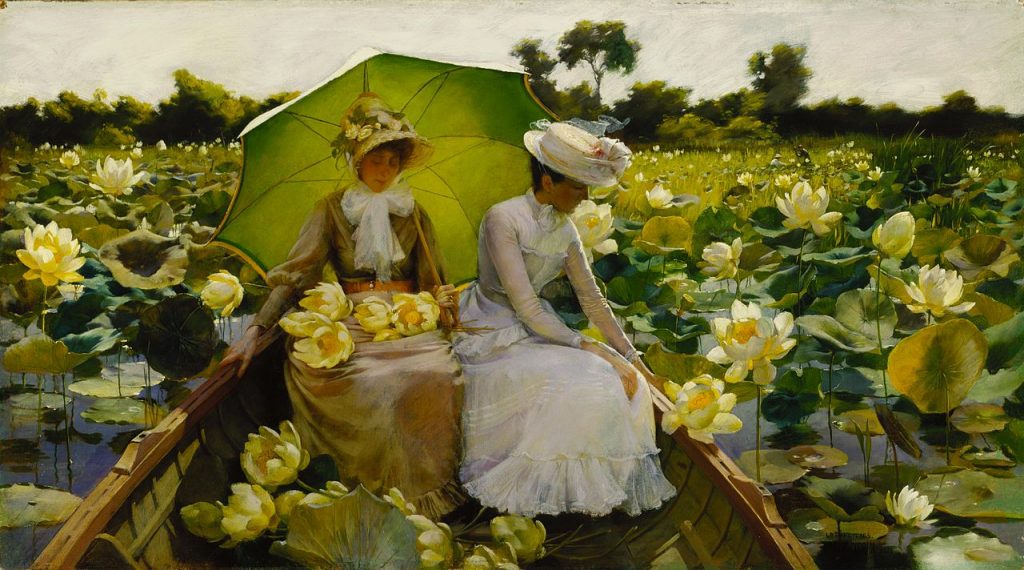
Charles Courtney Curran, a distinguished American painter, was born on February 13, 1861, in Hartford, Kentucky. His life unfolded during a transformative period in American art, and Curran emerged as a prominent figure known for his luminous and atmospheric depictions of landscapes, figures, and genre scenes. His artistic journey traversed the changing tides of American art, from academic traditions to the emergence of Impressionism.
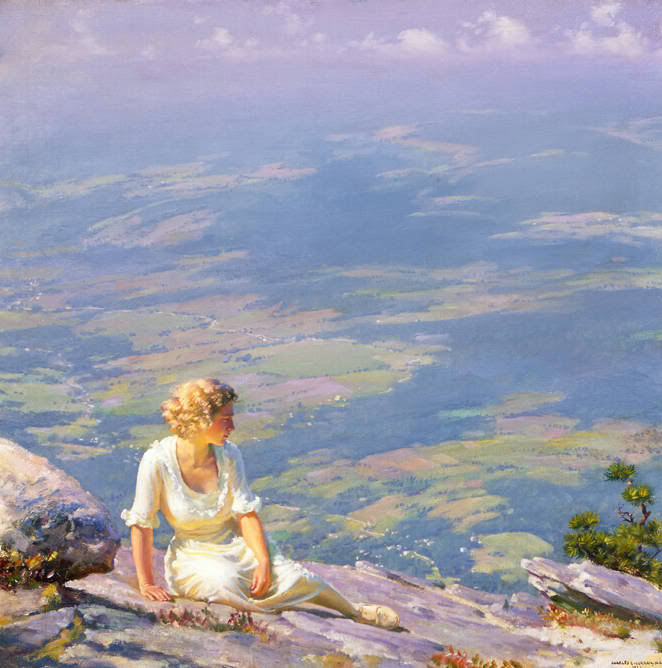
Curran’s early passion for art led him to the Cincinnati School of Design, where he received formal training under the guidance of Thomas Satterwhite Noble. After completing his studies in Cincinnati, he continued his artistic education at the National Academy of Design in New York City. Under the tutelage of Walter Shirlaw and Lemuel Wilmarth, Curran honed his skills and developed a solid foundation in academic painting.
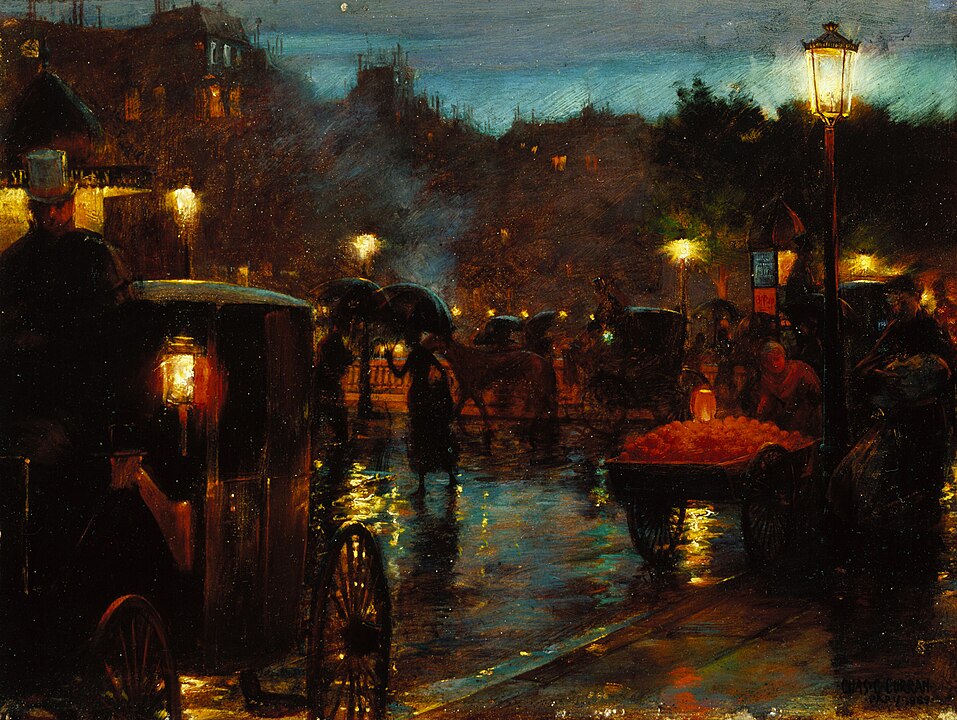
In the late 19th century, American art underwent a significant shift influenced by the ideas and techniques of European Impressionism. Charles Courtney Curran, like many of his contemporaries, was captivated by the fresh and innovative approach of the Impressionist movement. He traveled to Paris and studied at the Académie Julian, immersing himself in the vibrant art scene of the French capital. The exposure to the works of French Impressionists, particularly Claude Monet, had a profound impact on Curran’s artistic sensibilities.
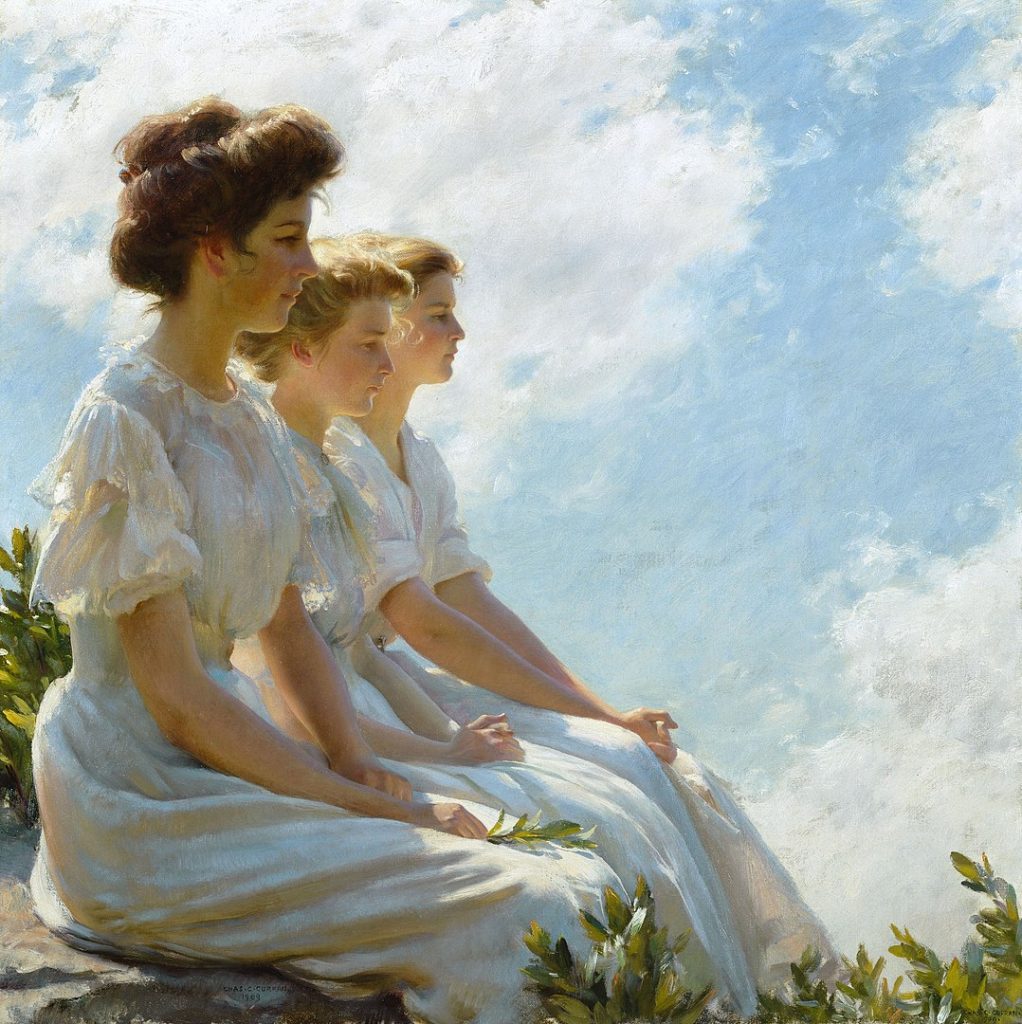
Curran’s time in Paris marked a turning point in his artistic style. He embraced the principles of Impressionism, characterized by loose brushstrokes, emphasis on light and color, and a focus on capturing the fleeting effects of atmosphere. This departure from the academic traditions of his earlier education demonstrated Curran’s willingness to evolve and adapt to the changing currents of the art world.
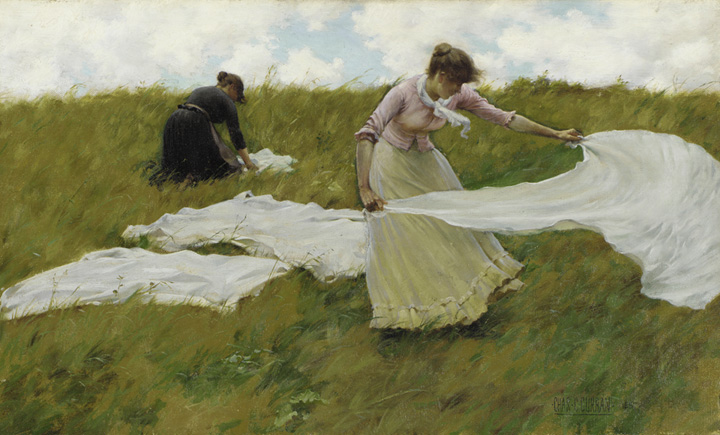
Upon returning to the United States, Curran became associated with the American Impressionist movement. His paintings began to reflect the influence of French Impressionism, characterized by the use of broken color and a commitment to portraying the effects of light. One of his notable works from this period is “On the Heights,” a sunlit scene of figures in a garden, bathed in dappled sunlight. This painting exemplifies Curran’s mastery of capturing the nuances of natural light and the play of colors.
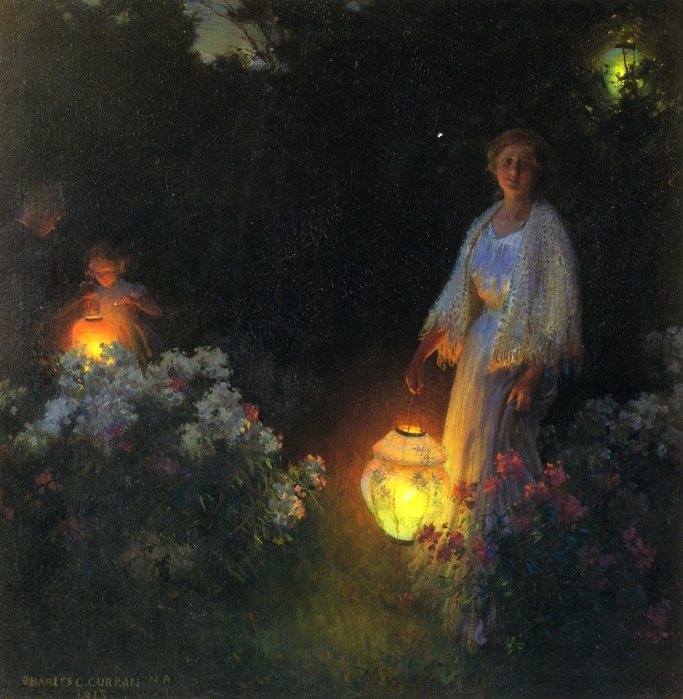
In 1889, Curran married Grace Wickham, and the couple eventually settled in New York. Grace often served as a model for Curran’s paintings, and their partnership created a supportive environment for the artist’s creative endeavors. The domestic scenes featuring Grace and their daughters became recurring motifs in Curran’s work, adding a personal dimension to his artistic expression.
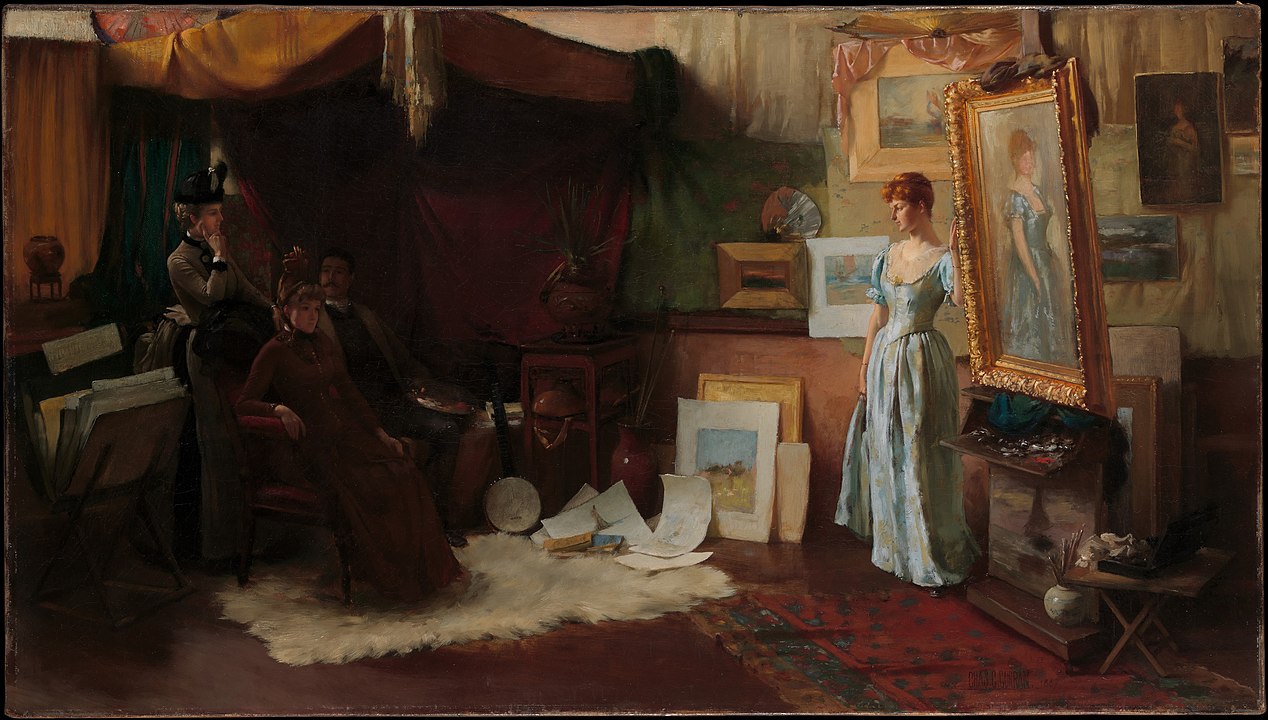
Curran’s success in the art world continued to grow, and he became a member of various prestigious art organizations, including the Society of American Artists and the National Academy of Design. His paintings were regularly exhibited at major art institutions, garnering critical acclaim and attracting a broad audience. His reputation as a leading American Impressionist solidified, and he was sought after for commissions and exhibitions.
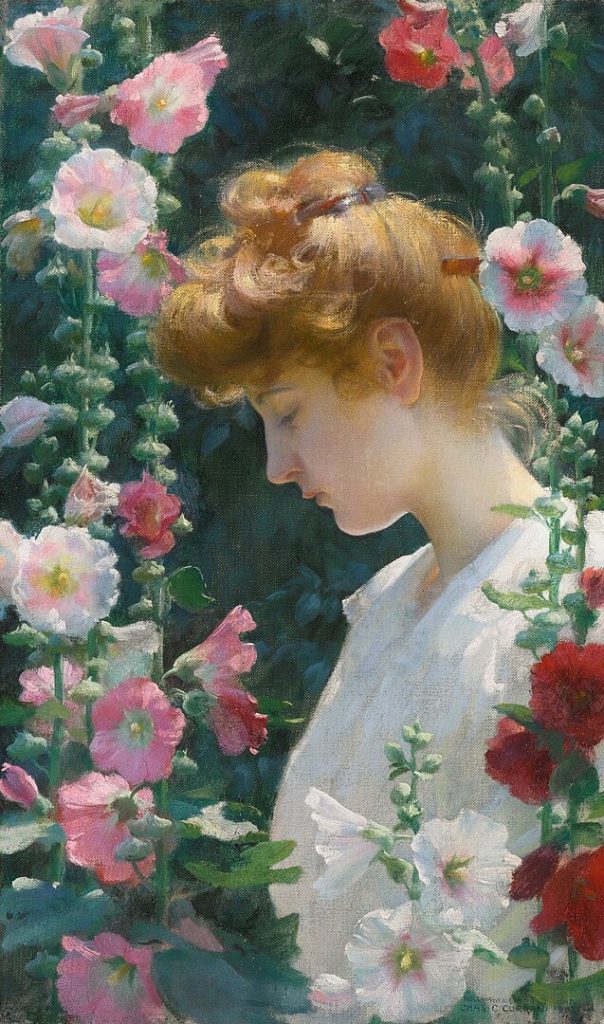
One of Curran’s most iconic paintings is “The Lotus Lilies,” completed in 1890. This work captures a tranquil moment on a pond, with two young girls in a boat surrounded by blooming lotus flowers. The composition, suffused with light and color, exemplifies Curran’s ability to convey a sense of serenity and beauty in everyday scenes. “The Lotus Lilies” remains a celebrated piece in Curran’s oeuvre and is often considered a quintessential example of American Impressionism.
As the 20th century unfolded, Curran continued to evolve as an artist. While he remained rooted in Impressionism, his work began to exhibit elements of American Tonalism, characterized by a more muted color palette and a focus on atmospheric effects. This fusion of styles demonstrated Curran’s adaptability and his willingness to experiment with different artistic approaches.
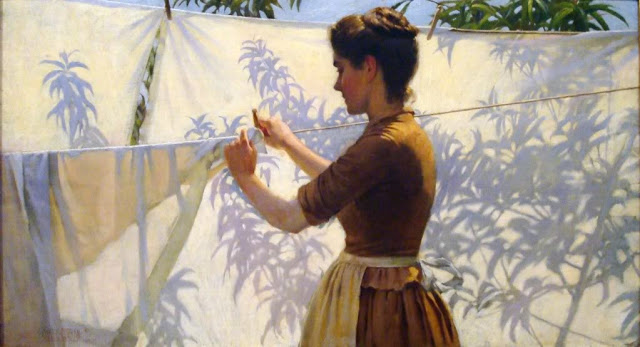
Curran’s role as an educator also left a lasting impact on the art world. He served as the director of the Art Students League of New York from 1918 to 1926, contributing to the development of young artists and fostering a supportive environment for artistic experimentation. His dedication to art education reflected his belief in the importance of passing on knowledge and nurturing the next generation of artists.
The latter part of Curran’s career saw a continued commitment to his artistic vision, marked by a series of successful exhibitions and accolades. He received numerous awards, including the Gold Medal at the Panama-Pacific International Exposition in 1915. His paintings continued to be sought after by collectors, and institutions recognized his contribution to American art.
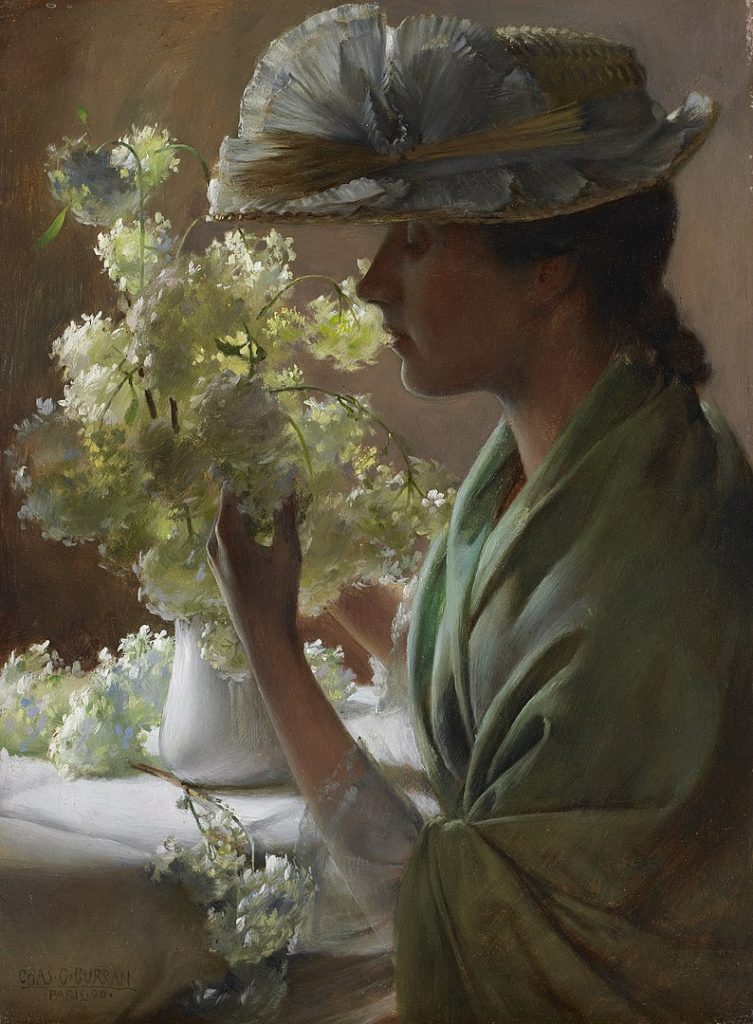
Charles Courtney Curran passed away on November 9, 1942, leaving behind a legacy that endures through his art and influence on American Impressionism. His ability to capture the essence of light, his dedication to evolving artistic styles, and his role as an educator contribute to his significance in the annals of American art history. Curran’s paintings, with their timeless beauty and atmospheric allure, continue to captivate audiences and stand as a testament to the enduring impact of one of America’s leading Impressionist painters.






